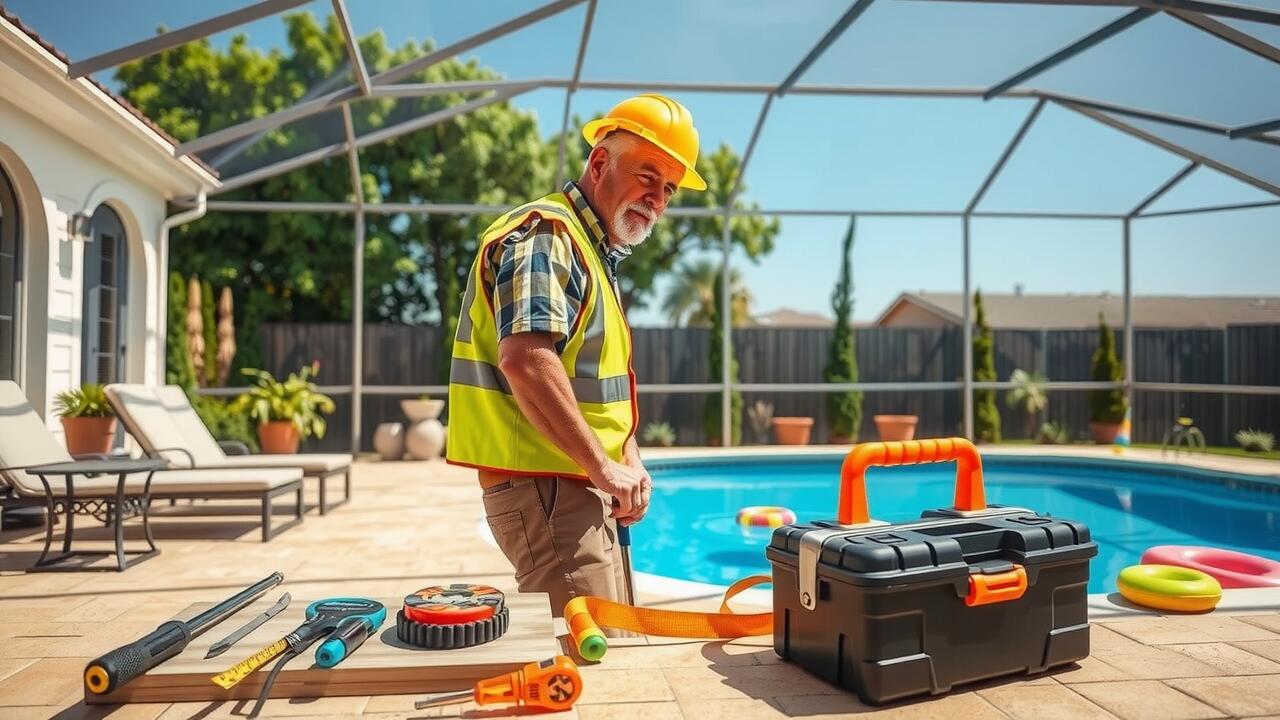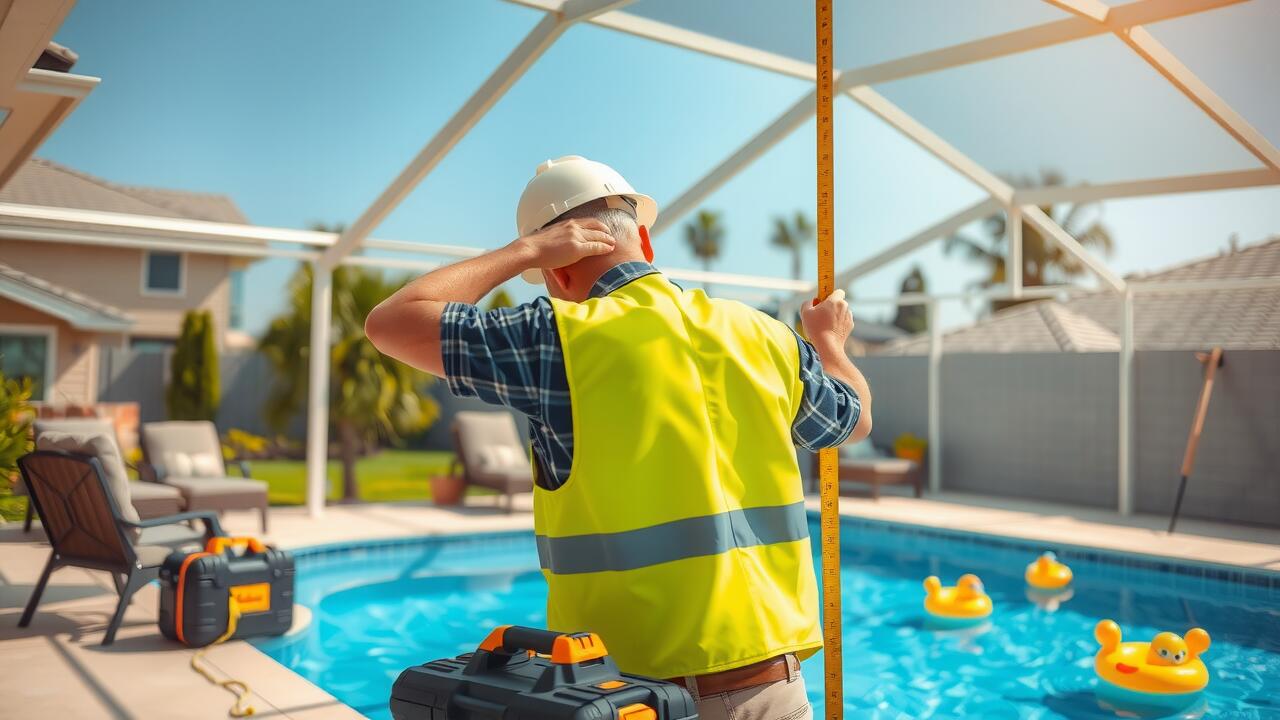
Necessary Tools and Equipment
To build your own pool enclosure, having the right tools and equipment is essential. Common hand tools such as a tape measure, level, and screwdriver will be necessary for precise measurements and assembly. Power tools like a drill or screwdriver will also significantly speed up the process. Safety gear, including gloves and goggles, should not be overlooked. It’s important to ensure that the materials used for the enclosure are compatible with your pool area and local climate conditions.
In addition to basic hand and power tools, specific materials are crucial for construction. Depending on the type of enclosure, options may include aluminum, vinyl, or wood framing. Mesh or glass panels are standard choices for lasting durability. Fasteners, such as screws or brackets, should match the material of your enclosure for optimal strength. Collecting these items beforehand will streamline your building process and help avoid unnecessary interruptions.
Essential Items for Building Your Enclosure
When planning to build your own pool enclosure, it is essential to gather the right materials to ensure the structure is both functional and durable. High-quality frame materials, such as aluminum or treated wood, are vital for providing stability and support. Additionally, selecting proper screening material is crucial for keeping pests at bay while allowing for adequate airflow and sunlight. Consider opting for UV-resistant screens to enhance longevity and protection against the elements.
Tools will also play a significant role in the building process. A power drill and appropriate fasteners are necessary for assembling the frame securely. Measuring tools, such as a tape measure and level, will help maintain accuracy throughout the construction. Safety gear, including gloves and eye protection, is important to prevent injuries during the build. With the right items gathered, constructing pool enclosures can be a rewarding DIY project that enhances your backyard experience.
Building Codes and Regulations
Before embarking on the construction of pool enclosures, it’s crucial to familiarize yourself with local building codes and regulations. These rules can vary significantly based on your jurisdiction. Many areas have specific requirements regarding the height, materials, and design of the enclosure to ensure safety and security. Failure to comply with these regulations may lead to fines or even the requirement to dismantle the structure.
In addition to local codes, some homeowners’ associations may impose their own guidelines for pool enclosures. It is essential to check these rules as they can affect the aesthetic and functional aspects of your project. Taking the time to understand these regulations upfront will help streamline the building process and ensure that your pool enclosure meets all necessary safety standards.
Understanding Local Requirements
Before starting the construction of a pool enclosure, it’s essential to familiarize yourself with the local building codes and regulations. These regulations govern various aspects, including the height and materials used for the enclosure, as well as gate requirements. Each municipality may have specific safety standards aimed at reducing the risk of accidents and ensuring the enclosure serves its intended purpose of providing safety around the pool area.
Additionally, homeowners may need to obtain permits before beginning construction. Engaging with local authorities can clarify any questions about compliance and the necessary paperwork involved. This due diligence ensures that your pool enclosures not only meet safety standards but also avoid potential fines or the need for costly modifications after the fact.
Maintenance Tips for Pool Enclosures
Regular maintenance of pool enclosures is essential to ensure their longevity and functionality. Inspections should be conducted frequently to identify any signs of wear or damage. Pay close attention to the seams and joints, as these areas are more susceptible to wear over time. Cleaning helps prevent the buildup of dirt, algae, and other debris that may compromise the enclosure’s integrity. A simple soap and water solution often suffices for routine cleaning; however, for stubborn stains or mildew, a more specialized cleaner may be necessary.
Additionally, consider the environment surrounding your pool enclosures. Overhanging trees can drop leaves and branches, leading to clogging or damage to the structure. Regular trimming of nearby foliage can mitigate this issue. Furthermore, ensure that any gates or doors are functioning properly and seal tightly, as this enhances safety and preserves the enclosure’s effectiveness. Keeping the enclosure in good repair not only enhances its appearance but also provides maximum protection for your pool area.
Keeping Your Enclosure in Top Shape
Maintaining pool enclosures is crucial for their longevity and functionality. Regular inspections should be conducted to identify any signs of wear or damage. Check for loose panels, rusted hardware, and any buildup of debris on screens or surfaces. Any necessary repairs should be addressed promptly to prevent further deterioration.
Cleaning is also an essential aspect of maintenance. It’s important to wash the enclosure periodically to remove dirt, algae, and other contaminants. Use non-abrasive cleaners to avoid damaging the material. This practice not only keeps your pool enclosures looking their best but also ensures that they remain safe and effective for years to come.
FAQS
Can I legally build my own pool enclosure?
Yes, you can build your own pool enclosure, but you must comply with local building codes and regulations. It’s important to check with your local authorities to ensure you meet all requirements.
What tools do I need to build a pool enclosure?
Essential tools for building a pool enclosure typically include a measuring tape, level, saw, drill, and fasteners. Make sure to also have safety gear such as gloves and goggles.
Are there any specific building materials recommended for pool enclosures?
Recommended materials for pool enclosures include aluminum, vinyl, or wood, depending on your design preference and budget. Each material has its own advantages in terms of durability and maintenance.
How often should I maintain my pool enclosure?
It’s advisable to inspect and maintain your pool enclosure at least twice a year. Regular maintenance helps to ensure its longevity and safety, which includes cleaning, checking for damages, and tightening loose fittings.
What are the consequences of not following local building codes when building a pool enclosure?
Failing to follow local building codes can lead to fines, legal issues, and required removal of the enclosure. It may also affect your home insurance coverage, especially if the enclosure is deemed unsafe.
